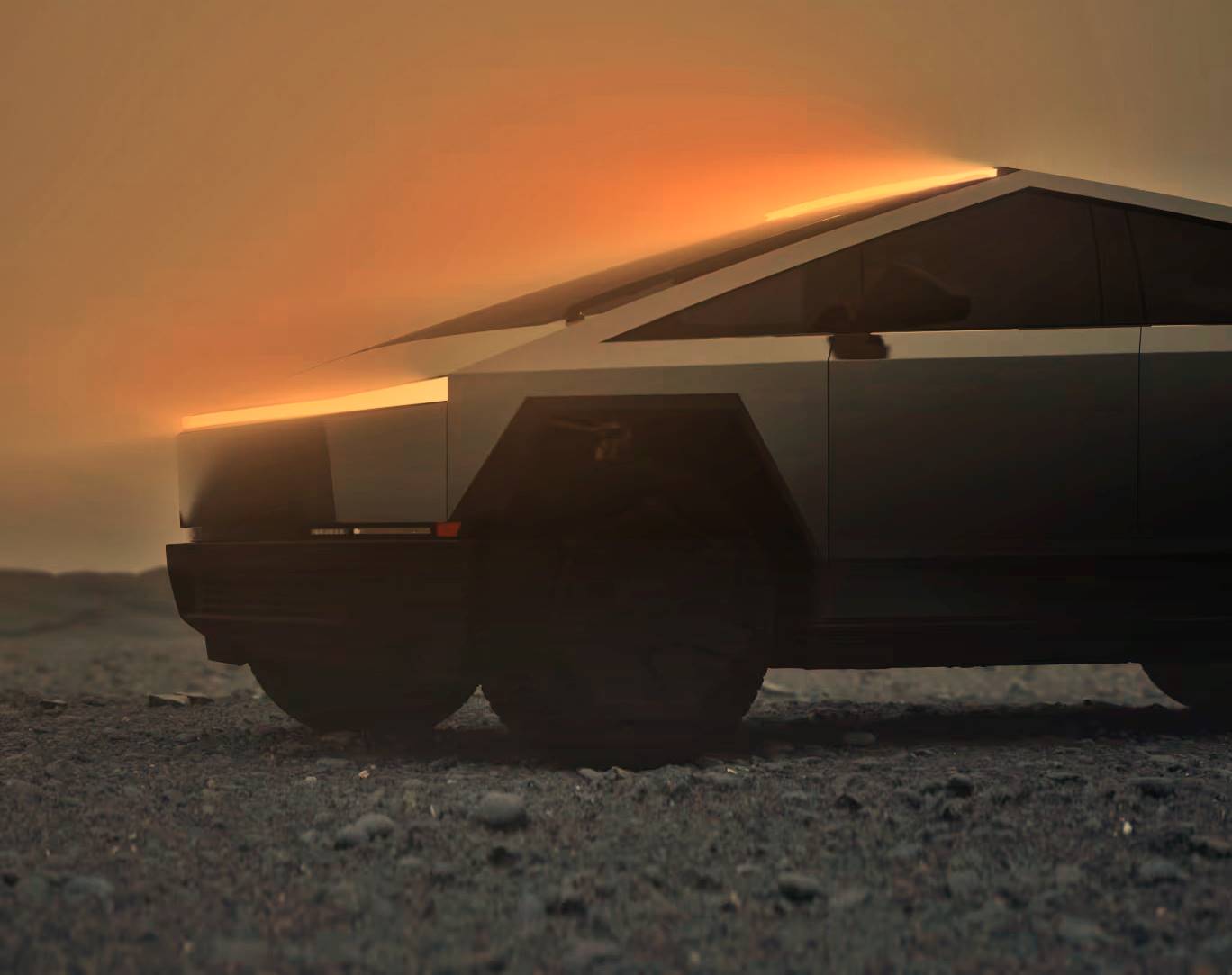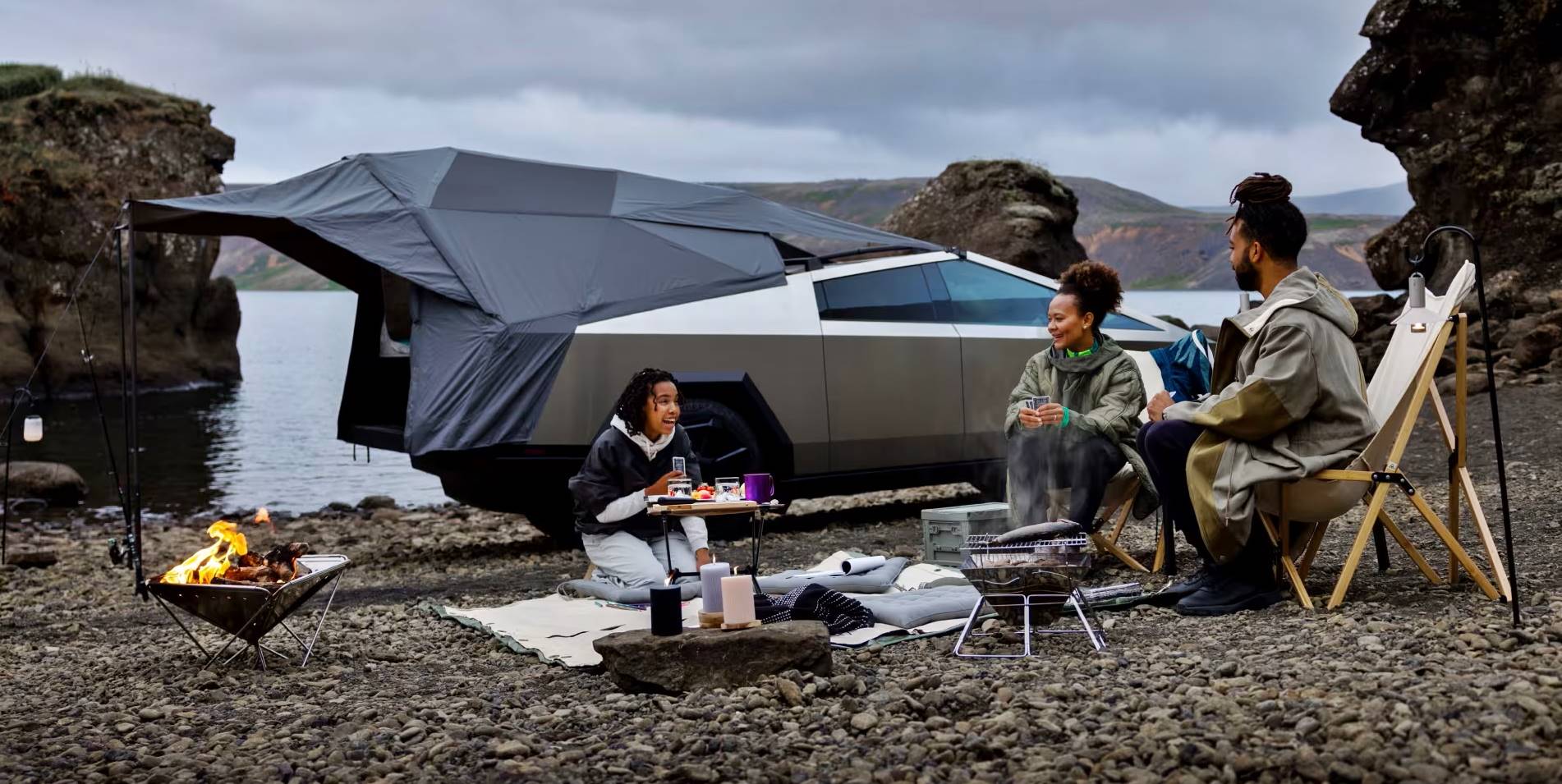Four years after Tesla’s lead designer Franz von Holzhausen threw a metal ball at the window of the prototype Cybertruck to show its toughness – and the glass broke – the Cybertruck is finally on the way to showrooms, with the first units being picked up by customers at the Gigafactory in Texas
Because it was such a memorable event in 2019, Elon Musk had it recreated at the factory event. This time, however, when Holzhausen threw a round object, it bounced off the glass rather than cratering it. Observers noted that the way the object behaved and bounced on the floor suggested it was a soft ball.
![Tesla Cybertruck EV [2023]](https://www.motaauto.com/wp-content/uploads/2023/12/Tesla-Cybertruck-EV-2023-6.jpeg)
![Tesla Cybertruck EV [2023]](https://www.motaauto.com/wp-content/uploads/2023/12/Tesla-Cybertruck-EV-2023-4.jpeg)
Incidentally, the Tesla owner said that the design was partly inspired by the Lotus Esprit that could go underwater in the 1977 James Bond movie, ‘The Spy Who Loved Me’.
The Cybertruck looks massive even in pictures and now we have some official measurements. Its overall length is 5683 mm which is slightly longer than the average Ford F-150 truck versions. Comparing to trucks in Malaysia, it’s about 300 mm longer than a Toyota Hilux. With a width of 2413 mm, it’s almost 550 mm wider (with door mirrors extended) than the Hilux. Where the Toyota would occupy a space of 10 square metres, the Cybertruck would require 13.7 sq. metres or a parking bay 37% larger.
![Tesla Cybertruck EV [2023]](https://www.motaauto.com/wp-content/uploads/2023/12/Tesla-Cybertruck-EV2023.jpg)
![Tesla Cybertruck EV [2023]](https://www.motaauto.com/wp-content/uploads/2023/12/Tesla-Cybertruck-EV-2023-3.jpeg)
Of much interest has, of course, been the electric powertrain – and as usual, Tesla does not provide technical details and only gives limited performance numbers. No surprise that it has a 48V electrical system and V2X technology so it can be a ‘mobile powerbank’, with up to 11.5 kW available.
For now, there are two versions of the Cybertruck – the Cyberbeast and the All-Wheel Drive. Both trucks have all-wheel drive but the Cyberbeast (US$99,990/RM467,000) – as its name suggests – has higher performance with an output of 845 bhp from 3 motors. The other version, with dual motors and 600 bhp, is priced at US$79,990/RM374,000 and in 2025, Tesla will also offer a rear-wheel drive single-motor version priced at US$60,990/RM285,000).
The Cyberbeast has a claimed 0 to 100 km/h time of 2.7 seconds and can go up to 209 km/h, while the All-Wheel Drive’s time is 4.3 seconds and tops out at 180 km/h. The differences in claimed range are not great – 547 kms for the Cyberbeast and 515 kms for the All-Wheel Drive. However, there is also a range-extender option which allows the vehicle to travel further – up to 755 kms for the All-Wheel Drive and 705 kms for the Cyberbeast. 15 minutes at a Supercharger can provide up to 235 kms of range.
![Tesla Cybertruck EV [2023]](https://www.motaauto.com/wp-content/uploads/2023/12/Tesla-Cybertruck-EV-2023-5.jpeg)
Range-extenders, as we know it, are small combustion engines (Mazda uses a rotary engine) which helps in charging the battery on the move. However, Tesla has built its name on being a pure electric brand so it won’t be doing something that uses liquid fuel. Though the Tesla website doesn’t describe the range-extender in the Cybertruck, Elon Musk himself answered a query in X (Twitter) and explained that it is an add-on battery pack that will take up about a third of the 2.23 sq. metre cargo bed.
The 2025 Rear-Wheel Drive version will have lower performance, going from 0 to 100 km/h in 6.7 seconds but having the same top speed of 180 km/h as the All-Wheel Drive. It might have a battery with less storage capacity as the claimed range is 402 kms and there isn’t a range-extender option indicated.

The inside of the stainless steel-bodied Cybertruck will be familiar to Tesla owners with its minimalistic theme. Though it looks very enclosed, there’s a large tinted glass roof overhead and the glass is armoured, claimed to resist the impact of a baseball at 112 km/h. The glass is also acoustic and suppresses sound transmission though being an EV, it’s already quitter than conventional trucks.
![Interior of Tesla Cybrtruck EV [2023]](https://www.motaauto.com/wp-content/uploads/2023/12/Interior-of-Tesla-Cybertruck-EV-2023.jpg)
![Interior of Tesla Cybrtruck EV [2023]](https://www.motaauto.com/wp-content/uploads/2023/12/Interior-of-Tesla-Cybertruck-EV-22023.jpg)
![Interior of Tesla Cybrtruck EV [2023]](https://www.motaauto.com/wp-content/uploads/2023/12/Interior-of-Tesla-Cybertruck-EV-2023-11.jpg)
With no engine at the front, the space under the bonnet is used for storage. The industry has taken to calling this area a ‘frunk’ (for front trunk) and the cover on the Cybertruck is powered. When raised, there’s 198 litres of usable space and a bench seat for two persons can also be raised from the floor.
![Tesla Cybertruck EV [2023]](https://www.motaauto.com/wp-content/uploads/2023/12/Tesla-Cybertruck-EV-2023-1-scaled.jpeg)


Since being revealed in 2019 and taking orders with US$100 deposits, there are said to be over a million people waiting for their Cybertruck. Even at the production rate of 250,000 trucks a year – which Musk said will be attained in 2025 – it will be a long wait.
![Tesla Cybertruck EV [2023]](https://www.motaauto.com/wp-content/uploads/2023/12/Tesla-Cybertruck-EV-2023-1.jpg)
![Tesla Cybertruck EV [2023] Tesla Cybertruck EV [2023]](https://www.motaauto.com/wp-content/uploads/2023/12/Tesla-Cybertruck-EV-2023-2-696x407.jpeg)
